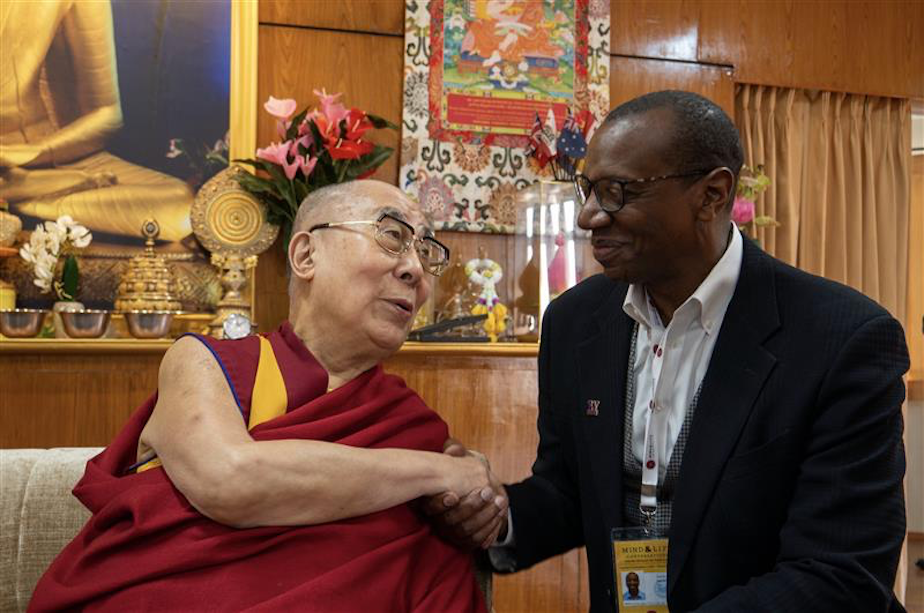'A single garment of destiny.' Dr. King's lessons on interconnectedness

Martin Luther King found Mahatma Ghandi’s approach to be practical and morally sound. Ghandi’s influence on Dr. King’s thinking is captured in a well-known photograph of Dr. King standing in front of a picture of Mahatma Gandhi—a photograph I have kept for years in my drawer. For King and Gandhi, the methods of Satyagraha—a commitment to truth, devotion to honesty and fairness, a refusal to do harm to others, and finally, self-sacrifice and patience contained stratagems for a moral society.
King also believed in interconnectedness and interdependence. “We are tied in a single garment of destiny,” he said in his 1963 “Letter from a Birmingham Jail:”
“Whatever affects one directly, affects all indirectly. I can never be what I ought to be until you are what you ought to be, and you can never be what you ought to be until I am what I ought to be ... This is the inter-related structure of reality.”
I was thinking of King’s “single garment of destiny” when I traveled recently to Dharamshala, India, to meet with the Dalai Lama. I was part of a group of researchers and community members invited to discuss the topic “Interdependence and Ethics.”
My own journey to the place known as “a shelter for spiritual pilgrims” was circuitous, winding through Catholicism, a Black Baptist church, a Jesuit college where I studied Buddhism, and the sacred beauty of the Pacific Northwest.
Sponsored
Getting from New Delhi up to Dharamshala by taxi was harrowing. Horns roared; cars maneuvered past; speeding motorcycles (frequently with a child, spouse or both perched behind the driver) dodged cars, people, and cows. This all seemed frantic and dangerous.
Once in Dharamshala, we toured a nonsectarian nunnery. A member of our group struggled to complete the hilly tour. She chose to leave early and offered me the opportunity to ride with her. I said yes and let my group know. An elderly white woman, she was walking slowly down steps toward a waiting car. When she held out her hand for support, I placed mine in hers, and we walked together.
Although it may have been easier for her to take the front seat, Carol offered it to me because I am 6-foot-5 and she knew I would be more comfortable there.
The 30-minute trip to town was even more terrifying than the trip out had been. The road barely accommodated two cars and at times became one lane. There were no lights, no traffic cops, just cars on a steep mountainside road. The driver maneuvered with a calmness that belied the pandemonium, and Carol tried to ease my worries with stories.
I listened to Carol but couldn’t take my eyes off the bedlam. When a car came close to sweeping us off the road, she laughed. “Look at that car coming at us. We’re inches from the ledge.” She took photos.
Sponsored
When we came to a one lane section of the road, our driver got out and walked ahead, talking and gesturing.
When he returned to the car, I asked how he managed this turmoil.
“Doesn’t anyone get angry or hurt?” I asked.
“We all live here,” he said. “This is a holy place, and we are all responsible for it. We know each other, and we are all eventually heading to the same place. There is no hurry to get there.”
That’s when I learned there was order to it all. Each driver was responsible for the other. The only way to get through was if each one assisted the other. The horns weren’t belligerent noise. One honk meant something; two honks meant something else. The traffic was problematic, but the solution to getting around was to be an interconnected network of people helping one another.
Sponsored
When we arrived at our hotel, I hugged Carol and thanked our driver. During the drive, we had shared stories, hovered on the edge, and, along with many others, gotten home.
There is so much heartbreak in our world today. Political and social division, the prospect of world war, health disparities, an Earth in climate crisis have brought us to the edge of catastrophe. The heart may break at that edge, but the spirit must remain intact. We have structural problems we need to address. We also need many moments of loving kindness, compassion, and fearlessness the likes of which inspires civil rights movements.
In this hard place, I am beginning to understand the kind of world I want to live in and the interconnectedness that Gandhi and King recognized — a shared, interdependent world where old bridges are repaired and new ones made, where we help each other along so that, ultimately, we all get home safely.
Ed Taylor is vice provost and dean of Undergraduate Academic Affairs at the University of Washington, where he also is a professor in the College of Education.



